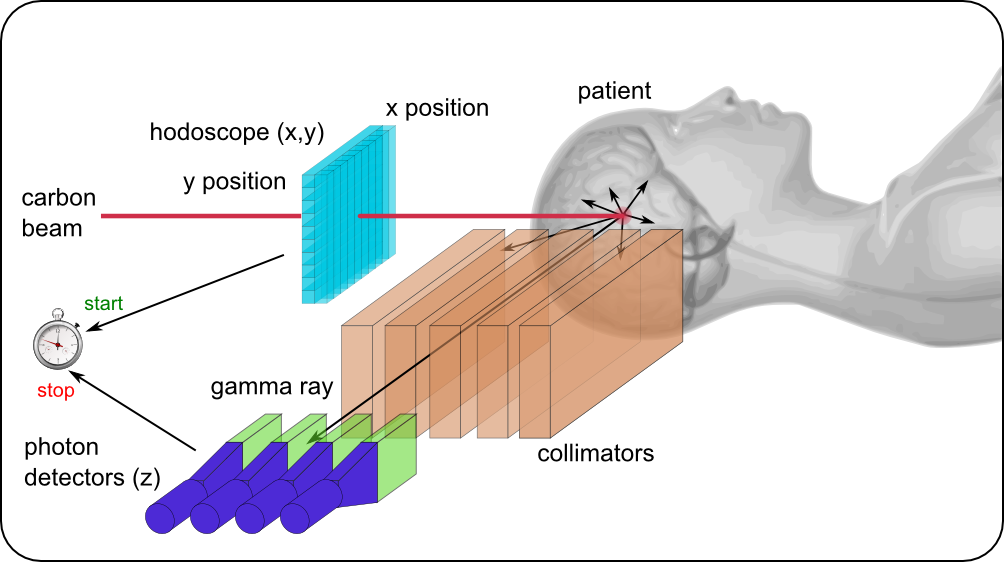Method and device for measuring in real time the dose distribution during ion beam therapy by means of prompt gamma detection
Référence
02109-01
Mots-clés
Statut des brevets
French patent application FR0853038 filed on May 7th,2008 entitled: « Monitorage en temps réel du profil de la dose lors d’un traitement par hadronthérapie par détection des gamma prompts résolue en énergie, spatialement et temporellement »



Inventeurs
Etienne TESTA
Cédric RAY
Nicolas FREUD
Statut commercial
Research agreement, exclusive or non exclusive licenses
Laboratoire
Institut de Physique Nucléaire de Lyon, (UMR5822), Villeurbanne, France, http://lyoinfo.in2p3.fr/
Description
TECHNICAL DESCRIPTION
The principle of the device is based on the detection of prompt gamma-rays emitted during nuclear interactions of the incident ions within the target. The gamma detection allows to determine the spatial distribution of nuclear interactions, which is strongly correlated to the dose distribution. The time of flight technique is used to discriminate the prompt-gamma signals from the background mainly due to neutrons (neutrons are detected a few nanoseconds after the arrival of prompt gammas). To locate the 3D position of the gamma point of emission, a beam hodoscope is used to determine the trajectory of every incident ion. Depending on the kind of gamma detection system chosen, the nuclear reaction point corresponds to the intersection of the ion trajectory given by the hodoscope with i) the gamma detection plane in the case of a 1D gamma-camera, ii) a cone in the case of a Compton Camera. The type of gamma-camera will be chosen on the basis of efficiency, signal-to-noise ratio and spatial resolution considerations.
Diagram of the real-time dose monitoring device
where the gamma detection system is a 1D gamma-camer 
BENEFITS
The only method currently available for dose monitoring in situ during ion beam therapy is Positron Emission Tomography (PET) which provides a 3D-control of the dose after the treatment.
The two main advantages of our system based on prompt-gamma detection are the following:
– Real-time control of the longitudinal dose (as a function of the penetration depth in the patient) and possibly of the 2D or 3D dose distribution.
– Absence of blurring effect as observed with PET (due to the metabolic wash-out of the radioactive nuclei).
INDUSTRIAL APPLICATIONS
Prompt-gamma imaging is a new method for ensuring that the treatment is actually delivered as prescribed by the radiotherapist, making it possible to take full advantage of the ballistic precision of proton or light ion beams (hadrontherapy).
For further information, please contact us (Ref 02109-01)